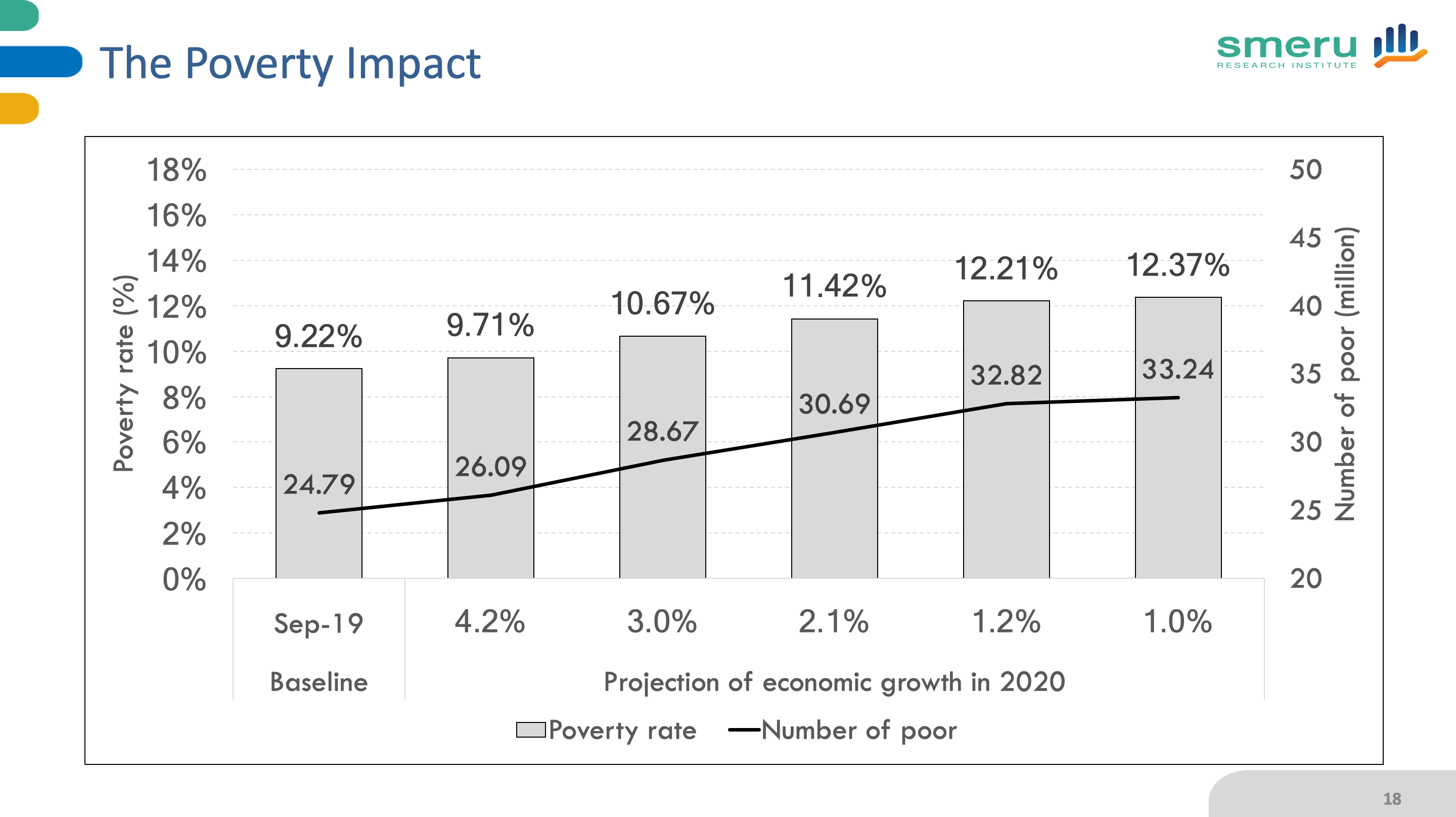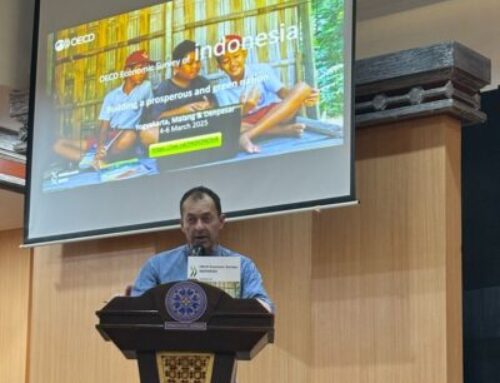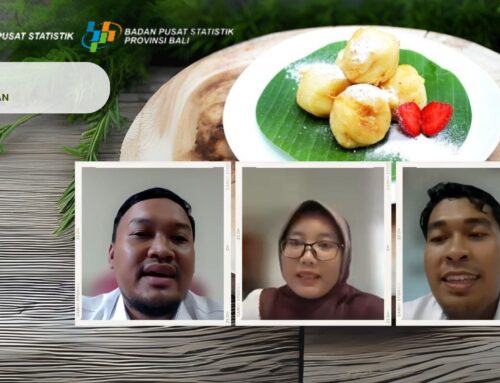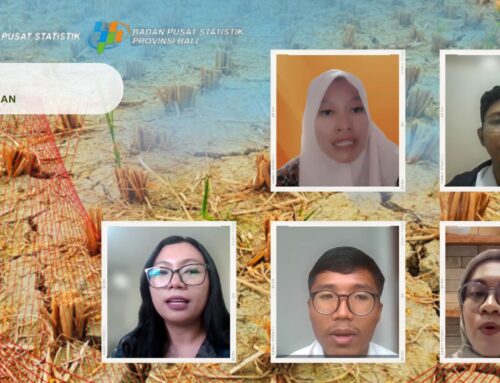The COVID-19 pandemic is causing severe economic impact through negative supply and demand shocks leading to a recession that pushes millions of people into poverty. In Indonesia, where up to 7,500 people have been infected by late April 2020, the pandemic is also causing severe economic impact, dropping the nation’s annual growth from a projected 5% to between 1% to 4%. With Indonesia facing a recession, a study was conducted by Asep Suryahadi, Ridho Al-Izzati and Daniel Suryadarma (all from The SMERU Research Institute) to estimate how the pandemic impacts poverty in Indonesia. Their study was presented on the FKP Webinar on Tuesday, 21 April 2020.
Learning from a previous shock in 2005-2006 when international oil prices increased, as economic growth in Indonesia declined, the average per capita household expenditure (PCE) declined. However, the average PCE decline was not evenly distributed, with the poorest 10% experiencing a 10% to 12% decline and the richest 10% experiencing a close to zero up to 3% decline. This explains why the increase in the poverty rate was more significant than the decrease in economic growth at that time. By translating the COVID-19 shock in economic growth to a shock in average PCE, then applying the 2005-2006 pattern of distributional impact of the shock on average PCE, this study estimated the impact of COVID-19 on poverty.
Using Indonesia’s 2020 economic growth projections of 1% to 4.2%, this study estimated that the decline in average PCE ranges between 1.17% to 5.72%. With the pattern of distributional impact applied, this study estimated that Indonesia’s poverty rate might increase by 0.48% to 3.14% or about 1.3 million to 8.45 million more people pushed into poverty. With such a dire impact on poverty, the study highlights the importance of social protection programs to assists the new poor in addition to the existing poor. The working paper for this study can be accessed through this link.
For the complete presentation and Q&A session, please refer to the video and materials provided.







Do you have any data on poverty of the elderly, especially of those who have no pension and are already poor before the pandemic?
Hi, thanks for the comment. We don’t have that data at FKP, but the seminar linked below has some some discussion on the need for social protection for the elderly in the future by Dr Elan Satriawan of TNP2K
http://www.fkpindonesia.org/summary-report/fkp-hosted-by-the-smeru-research-institute-sistem-perlindungan-sosial-indonesia-ke-depan
We also encourage you to browse the website of TNP2K on this issue:
http://www.tnp2k.go.id/search?q=old+age+poverty
Thanks for coming by!